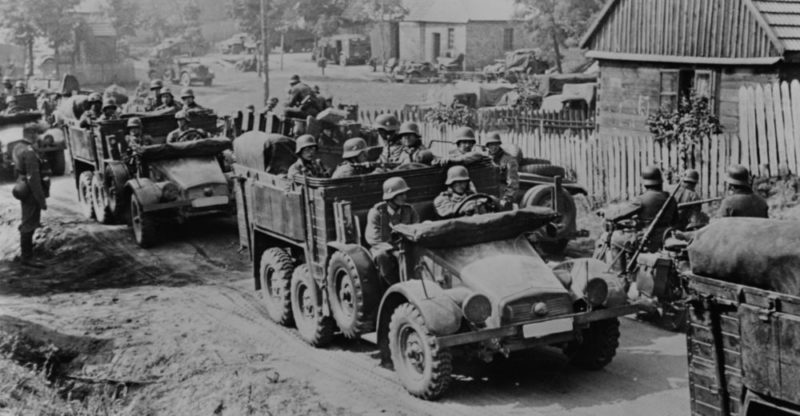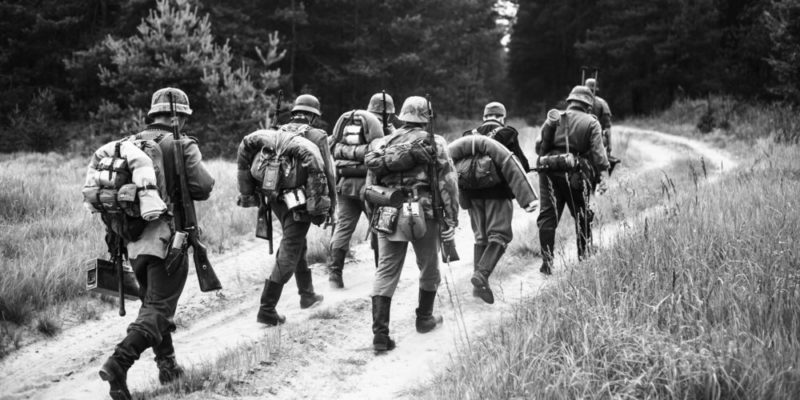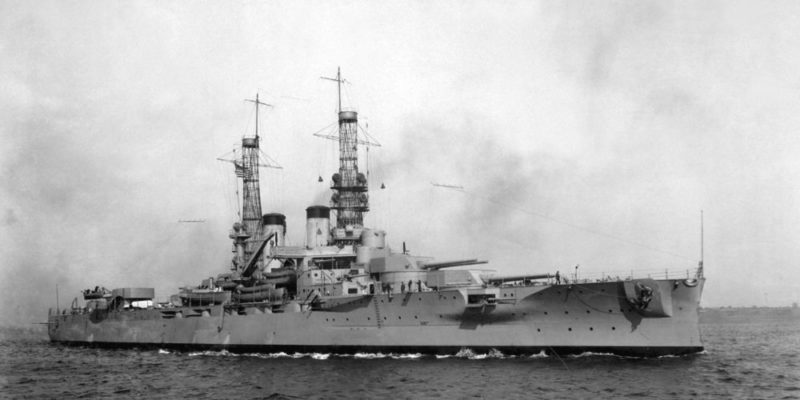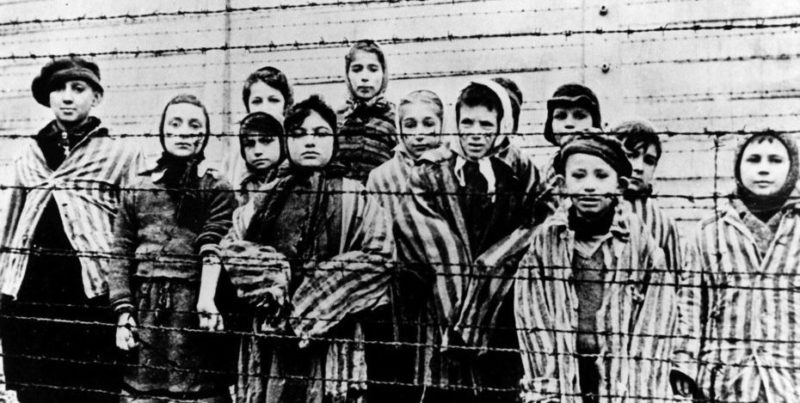We explain what World War II was and the sides that intervened. In addition, its characteristics and outstanding events.
What was World War II?
World War II was a global armed conflict that took place between 1939 and 1945 , directly or indirectly involving most of the powers of the time. It is considered the largest war in the history of mankind, in terms of the number of nations involved, the territorial dimensions of the conflict, the amount of war weapons used and historical consequences.
Few nations in the world remained untouched by the conflict. This occurred in three main scenarios: European, Asian and African . The two opposing sides were the Allied Countries and the Axis Powers, in a conflict that blurred the borders between military forces and civilian populations.
Within the framework of this war there were events as traumatic for human civilization as the Jewish Holocaust , the mass death of civilian citizens and the use, for the first and only time in history , of nuclear weapons of mass destruction.
Sides of World War II

The forces in contention were, mainly, those of the European and Asian powers and the United States, divided into two political and ideological blocs:
- Axis powers. Made up of Nazi Germany , Fascist Italy and Imperial Japan . They had the nations of Bulgaria, Hungary, and Romania as partners , Francoist Spain as non-participating allies , and Finland, Thailand, Iran, and Iraq as co-belligerent states.
- Allied countries. Made up mainly of France , Great Britain, the United States, and the Soviet Union . To them should be added Poland, China , Norway, Denmark, Belgium, Luxembourg, the Netherlands, Greece , Yogoslavia, Canada, New Zealand, South Africa, Australia and some other countries with a minority participation in the conflict but diplomatic support for the allies.
Beginning and ending events of World War II

The German invasion of Poland , which occurred after it annexed Austria and Czechoslovakia without any reaction from the Allies, is usually taken as the triggering event for World War II . However, the alliance between Poland and France demanded that the latter declare war on the German Third Reich when, following an agreement to share Polish lands with the then neutral USSR, they crossed the border with their troops.
The end of World War II occurred in 1945 , in a period between the fall of Germany by Soviet forces and the suicide of Adolf Hitler , and the American bombing of the Japanese cities of Hiroshima and Nagasaki with atomic bombs, forcing the immediate unconditional surrender of this country.
Cost in lives of World War II
The Second World War cost between 55 and 70 million lives , between military combatants on the various battle fronts, civilians killed by massive bombardments from one side and the other, and people executed in concentration and extermination camps by the armed forces. From the axis. It is estimated that some six million Jews have been systematically exterminated in the latter way.
Conflict scenarios during World War II

As has been said, the war spread throughout the Mediterranean and Eastern European continents , as the Nazis conquered surrounding territory, and later in the territories of Saharan Africa , as they sought to recover their colonies lost in the First World War . In both cases they were aided by Italian troops and confronted by European and North American allies.
On the Asian front, on the other hand, Japan was the invading power of China and many countries of Asia Minor , initially facing the USSR and, after being defeated in the battle of Khalkin Gol, exclusively the North Americans, who entered the conflict after the Japanese bombing of Pearl Harbor.
Battles of World War II

The battles of World War II were numerous and complex, but they took place both on the continental shelf, in the water (and even underwater, with submarines) and in the air . This implied the use of a lot of war machinery and the technological exploration of numerous artifacts for military purposes.
World War II leaders
The opposing powers -especially those of the Axis, of a totalitarian nature-, were led by:
- Adolf Hitler (Germany)
- Benito Mussolini (Italy)
- Hirohito (Japan)
- Winston Churchill (Great Britain)
- Joseph Stalin (USSR)
- Dwight Eisenhower / Harry Truman (USA)
- Charles DeGaulle (France)
- Mao Tse Tung (China)
Stages of the Second World War

Three stages of World War II can be distinguished:
- Fight in Europe . This stage is characterized by the successive victories of the Axis forces in Central and Western Europe, especially the conquests of France and the Netherlands, as well as the expansion of the fascist forces in North Africa. For its part, Japan invades China and begins its expansion in Asia Minor.
- New participants. The intermediate phase of the war takes place when Germany breaks its non-aggression pact with the USSR and sets out to conquer the Soviet territories in the East, automatically adding it to the Allied countries. Similarly, Japan will bomb the US military base at Pearl Harbor and draw the US into the conflict.
- defeat of fascism . Mussolini is deposed and executed by the communist Italian partisans, and Germany must retake control of the country. The advance of the Nazi troops on the USSR is quickly reversed and as they advance towards Berlin, the Soviet troops liberate the concentration camps. The US lands in Normandy (France) and Sicily (Italy), so the Axis forces are defeated on all sides. Finally, Germany and Italy surrender and in August 1945 Japan does too, after the cities of Hiroshima and Nagasaki were bombed with nuclear weapons.
Consequences of World War II

The main consequences of this conflict are:
- The division of Germany. Germany is divided into two different countries: one controlled by the Allies and the other by the USSR.
- Sinking of Europe. The devastation in Europe will reach such a degree that US financial aid will be required to rebuild it (Marshall Plan), which will increase US influence in the area.
- bipolar world. The new world powers will be the United States and the Soviet Union, thus beginning the Cold War .
- New technologies. Many of the technologies that would become popular during the end of the 20th century had their origin in German scientists who shared both the Allies and the Soviets.
Espionage in World War II
This conflict was the first to feature a vast network of espionage throughout the world, foreshadowing the competition for information during the coming Cold War . This network of espionage and counterintelligence, by both Allied and Axis forces, extended to virtually the entire world.
Holocaust

The massacre of millions of Jewish citizens and other supposedly “inferior” races in the Nazi death camps is called “the holocaust” . Many suffered unimaginable torture or were victims of cruel experiments. This lesson in horror, added to the two atomic bombs, add to the list of the worst monstrosities of which humanity has been capable.
The above content published at Collaborative Research Group is for informational and educational purposes only and has been developed by referring to reliable sources and recommendations from technology experts. We do not have any contact with official entities nor do we intend to replace the information that they emit.














